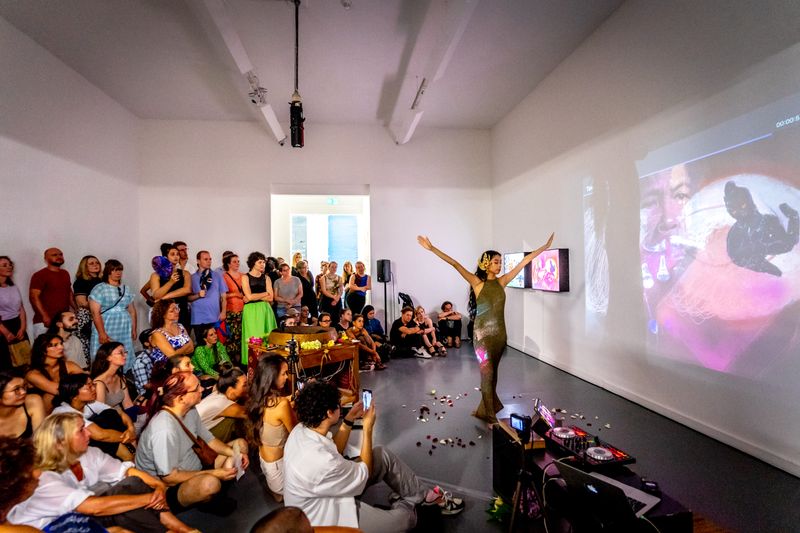The Cosmic Tortoise: Purana exhibition at Leiden University
by Samboleap Tol
Published on December 13, 2024
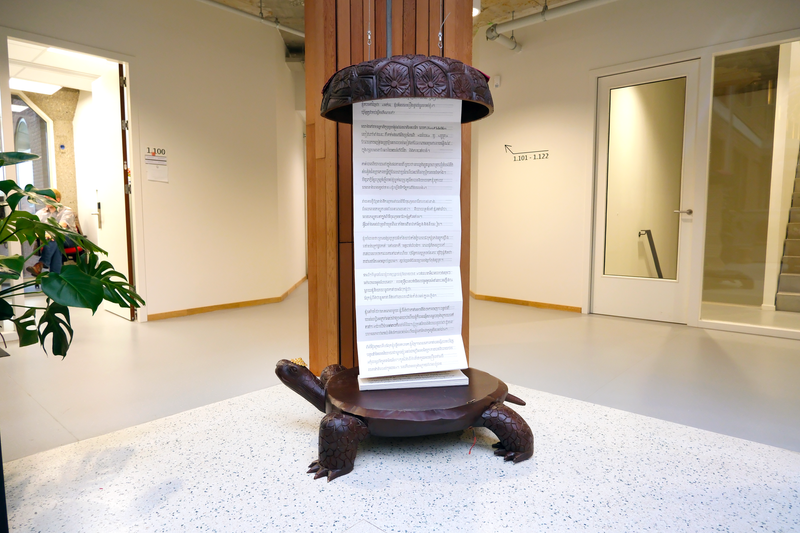
As part of the Visualizing Ancient Histories symposium organized by the PURANA Project, an exhibition of artist Samboleap Tol’s work was held at Leiden University.
The exhibition, titled The Cosmic Tortoise: I Feel Like My Ancestors Have Left Me 1000 Voicenotes to Decipher, ran from November 14 to December 2, 2024, and was located on the first floor of the new Herta Mohr building.
The artworks exhibited, Dharma Songs v2 (2023) and The Cosmic Tortoise (2024), are the latest creations by Dutch-born Khmer artist Samboleap Tol. These works reflect her ongoing interest in her ancestral heritage, particularly in relation to religion, art, and history.
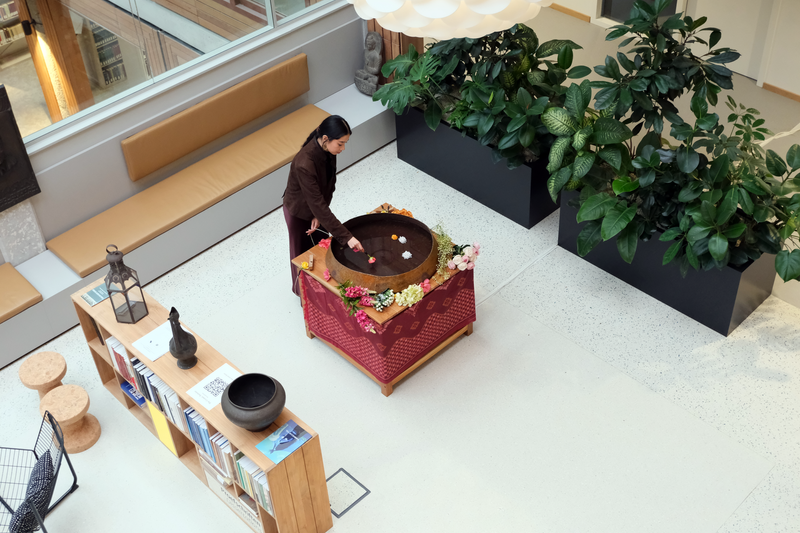
Dharma Songs v2, an interactive sonic artwork, is activated when viewers dip flowers into a gong filled with water. Voices from the postcolonial diaspora can be heard responding to Tol’s question: “If there’s anything you would like to ask your ancestor, what would you say?” The artwork is Tol’s response to rituals from her upbringing, specifically the making of offerings for the ancestors. These rituals took place both at home and in the temple.
Home offerings, known as saen, were possibly introduced to Cambodia by Southern Chinese migrants, while temple offerings were part of Pchom Ben, an indigenous Khmer ancestral veneration festival held during September and October. These practices allowed Tol to develop a profound connection with her ancestors despite never meeting them, knowing their names, or knowing their resting places—consequences of the Khmer Rouge regime.
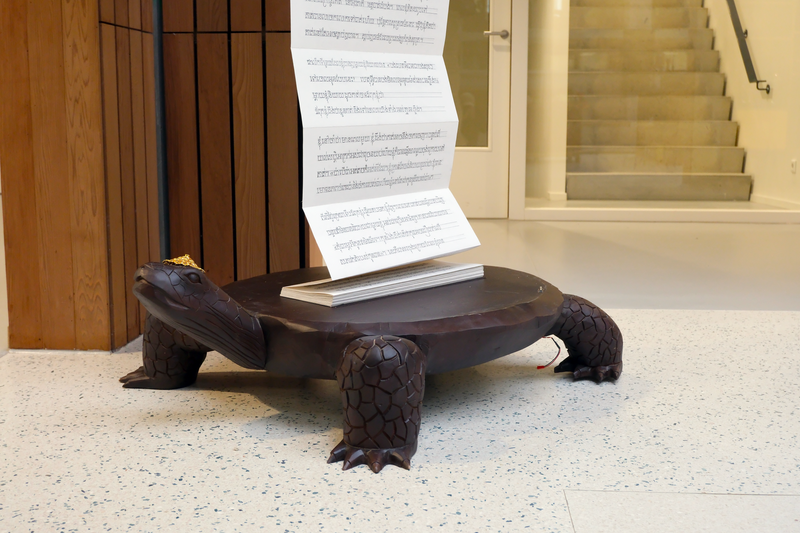
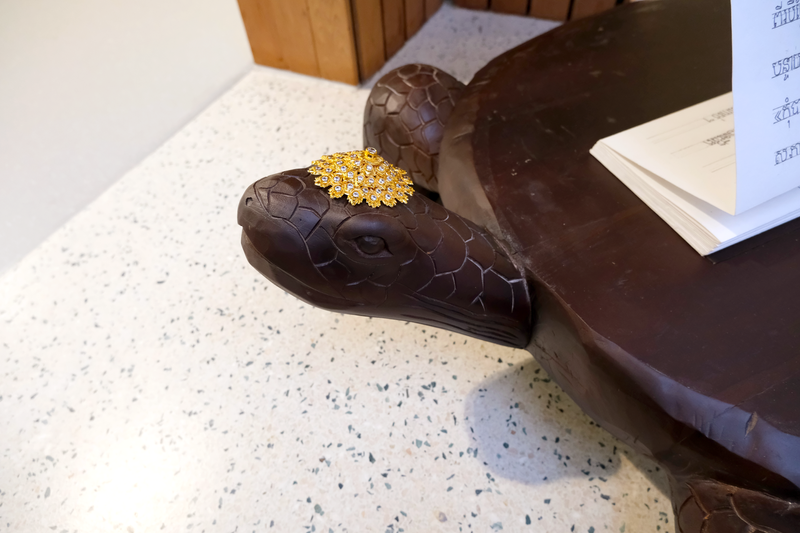
Her latest artwork, The Cosmic Tortoise, is a teak wood-carved tortoise containing a leporello manuscript inside its shell. Since meeting Purana members Elizabeth Cecil (Florida State University), Peter Bisschop (Leiden University), and later Arya Adityan (Florida State University), Tol has sought to better understand the millennia-long influence of South Asia on Southeast Asia, deepening her knowledge of classical Southeast Asian art. Inspired by visits to Candi Sukuh, a 15th-century Hindu temple in Java, and Angkor Wat, the world’s largest Hindu-Buddhist temple complex, Tol became increasingly aware of the Churning of the Ocean of Milk mythology. This inspired her to reference Kurma, Vishnu’s manifestation as the cosmic tortoise, in her new artwork.
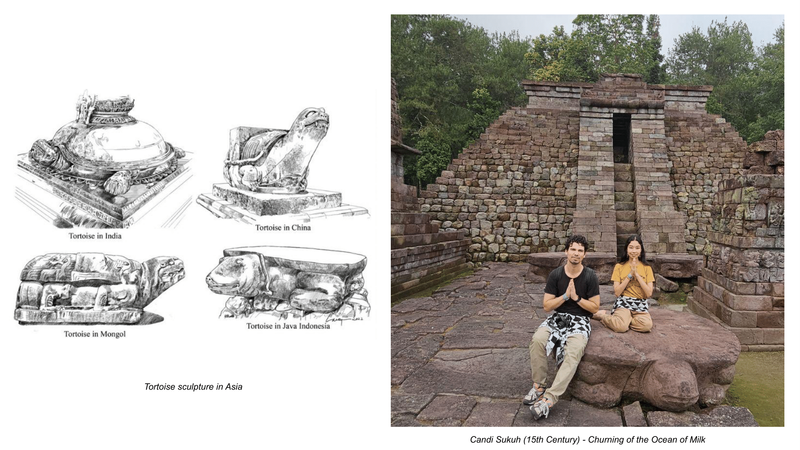
Since 2023, Tol has spent several months in Indonesia for work periods and residencies at the Cemeti Institute for Art and Society and MenH Studio. At Cemeti, she became intrigued by a 10th-century inscription that mistakenly identified a Javanese person as Khmer, possibly hinting at a significant Khmer diaspora. Following various rumors and leads, she sought to understand their fate in Java, but any findings remain controversial. At MenH Studio, she engaged with Old Javanese (Kawi) enthusiasts and compared Khmer with Kawi, noting countless linguistic parallels. She also felt at home among young people learning their ancestral script to reconnect with the past.
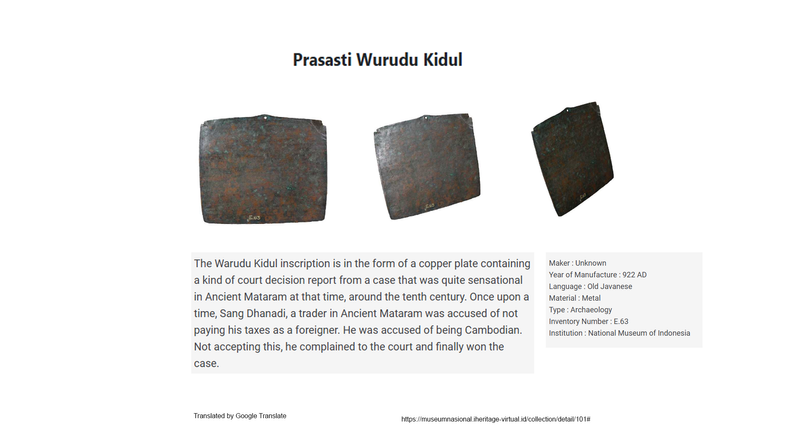
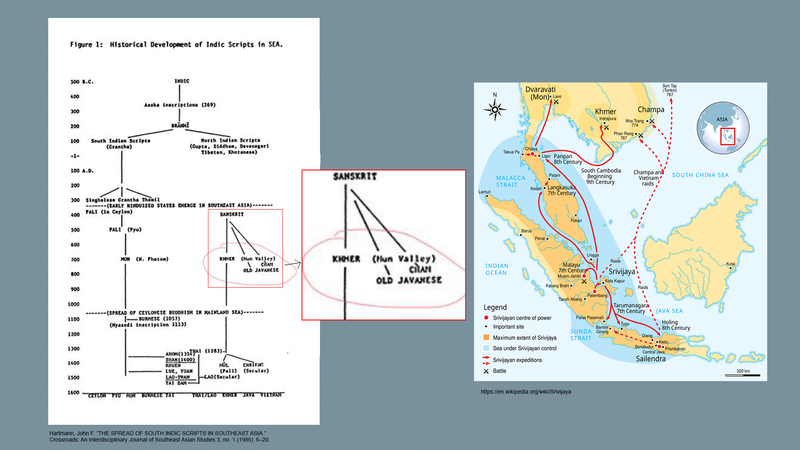
The inclusion of an accordion-shaped book was inspired by two similarly shaped manuscripts obtained at a Dutch auction:
- A kraing, a manuscript written by Khmer monks containing Buddhist poetry recited during deathbed and funeral rituals. The singing, called smot, is characterized by its mournful, emotional style.
- A pustaha, a traditional manuscript of the Bataknese datu, containing intergenerational shamanic knowledge. The manuscript typically features a hardwood cover engraved with a lizard, possibly representing ilik, an earth deity in Toba Batak culture.
The kraing inspired Tol to write her own story, drawing from the original content and smot singing, while the pustaha influenced her decision to incorporate a hardwood cover featuring an animal or deity.
Tol also participated in the symposium as a speaker. In her lecture-performance, she and Elizabeth Cecil read the translation of the tortoise’s manuscript and activated the voices of Dharma Songs.
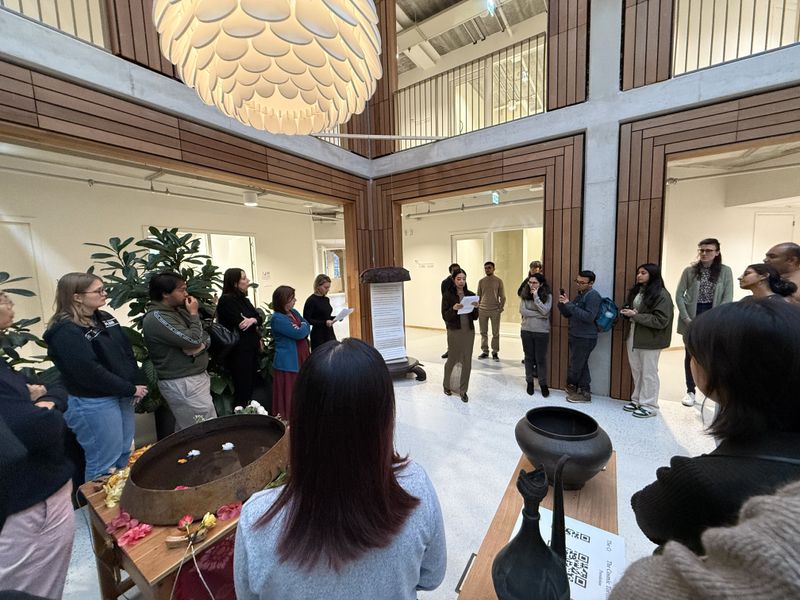
Tol reflected on her upbringing, artistic journey, historical influences, and motivations. She concluded her talk by expressing gratitude to the scholarly community, noting that many questions about her ancestry—particularly its layered spiritual expressions—had seemed inaccessible to her as a child of the diaspora. However, the work of academics has helped and continues to help her piece together the fractured elements of her realities and ancestral cosmologies.
As a gesture of appreciation, she performed a dance inspired by the poses depicted in the reliefs of Borobudur.
